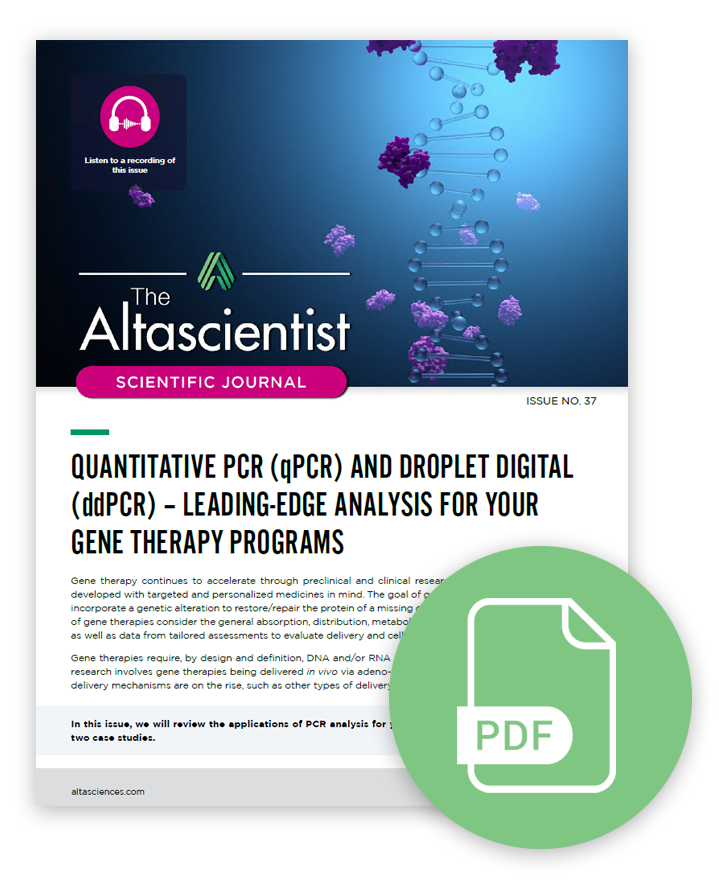ISSUE NO. 37 — Quantitative PCR (qPCR) and Droplet Digital (ddPCR): Leading-Edge Analysis for Your Gene Therapy Programs
The gene therapy landscape continues to accelerate in preclinical and clinical research, with programs constantly in development for targeted, personalized medicines. The goal is to safely incorporate genetic alterations to restore and repair the proteins of missing and/or faulty genes. Gene therapy requires DNA and/or RNA delivery and analysis, and while most ongoing research involves therapies being delivered in vivo via adeno-associated viral (AAV) vectors, other in vivo delivery methods are on the rise.
Quantitative, digital, and reverse transcription polymerase chain reactions (qPCR, dPCR, and RT-PCR, respectively) are fast and cost-effective techniques employed by Altasciences. These methods are invaluable for quantitative analysis of gene expression and for analyzing genetic variation in amplified DNA and RNA. This ability to analyze variation from limited samples has made genetic diagnosis easier than ever. But how are PCR analysis techniques applied? And how are they incorporated into studies?
Issue 37 of The Altascientist takes a closer look at these techniques, with in-depth information on:
- qPCR, dPCR, and RT-PCR and their utilities—including droplet digital PCR (ddPCR);
- regulatory considerations;
- PCR applications, advantages, and comparisons;
- and case studies.
HOW DOES PCR WORK?
PCR is a laboratory technique for rapidly amplifying millions of copies of specific DNA segments to be studied in greater detail. The process utilizes short synthetic DNA fragments called primers to choose a section of the genome to be amplified. Multiple rounds of DNA synthesis will then take place to amplify that section. This process is done using thermal cycling of a reagent cocktail. Reactions contain buffers to ease the DNA polymerase enzymatic amplification of nucleic acids, and target-specific primers and probes. Primers and fluorescent probes are designed and optimized for each assay and platform, to determine the appropriate region or target for amplification.
Explore all issues of The Altascientist in our Resource Center. And don’t forget to subscribe to The Altascientist: Audiobooks on Spotify, Apple Podcasts, or wherever you get your audio content.
